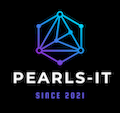IT Infrastructure Services
Network design & management (LAN/WAN)
Network design and management involves planning, implementing, and maintaining both Local Area Networks (LANs) and Wide Area Networks (WANs). LANs connect devices within a single, localized area like an office, providing high-speed connectivity. WANs, conversely, span larger geographical distances, linking multiple LANs, often over public networks like the internet. This service ensures seamless communication, efficient data flow, and secure connectivity across an organization’s entire network infrastructure, from local workstations to globally dispersed offices. It includes configuring routers, switches, firewalls, and implementing VPNs for secure remote access and inter-office communication.
Server setup and maintenance (Windows/Linux)
Server setup and maintenance involves the initial configuration, ongoing management, and optimization of physical or virtual servers running Windows or Linux operating systems. This includes installing and configuring the OS, necessary software, and security patches. Regular maintenance tasks encompass monitoring server performance, managing disk space, updating drivers, applying security updates, and ensuring proper backup procedures. The goal is to maintain server stability, security, and optimal performance to support business operations and applications reliably.
Data center management
Data center management encompasses the comprehensive oversight of all processes, services, and applications within a data center environment. This includes the meticulous management of physical and network equipment, software, and data. Key responsibilities involve hardware and software maintenance, ensuring robust connectivity solutions, managing data storage and flow, and implementing strong backup and disaster recovery plans. The ultimate goal is to maximize uptime, minimize downtime, and ensure the efficiency and suitability of all IT infrastructure to align with business objectives.
Cloud infrastructure (AWS, Azure, Google Cloud)
Cloud infrastructure services involve leveraging remote servers and networks hosted on the internet to store, manage, and process data, rather than owning and maintaining physical hardware. Leading providers like Amazon Web Services (AWS), Microsoft Azure, and Google Cloud Platform (GCP) offer a vast array of services including computing power, storage, databases, networking, analytics, and machine learning. These services provide scalability, flexibility, and cost-effectiveness, allowing businesses to rapidly deploy and manage applications and data without significant upfront investments in IT infrastructure.
Virtualization (VMware, Hyper-V)
Virtualization involves creating virtual versions of computing resources, such as servers, storage devices, and network resources, from a single physical hardware system. This technology allows multiple operating systems and applications to run concurrently on a single physical server, maximizing hardware utilization and reducing costs. Key platforms like VMware and Microsoft Hyper-V enable organizations to build and manage virtual machines (VMs), providing benefits such as improved resource allocation, simplified disaster recovery, and enhanced testing environments. Virtualization is fundamental to modern data centers and cloud computing, offering flexibility and efficiency in IT operations.
Backup & disaster recovery
Backup and disaster recovery (BDR) are critical components of IT infrastructure, ensuring business continuity and data protection. Backup involves creating copies of data and storing them in secure, often remote, locations to prevent data loss from accidental deletion, corruption, or cyberattacks. Disaster recovery, on the other hand, is a comprehensive plan and set of processes for rapidly restoring IT systems, applications, and data after a major outage or disaster. This includes strategies like failover to redundant systems and defining Recovery Time Objectives (RTO) and Recovery Point Objectives (RPO) to minimize downtime and data loss, ensuring quick resumption of business operations.
IT hardware procurement & installation
IT hardware procurement and installation involves the strategic acquisition and deployment of physical IT components necessary to support an organization’s infrastructure. This includes everything from computers, servers, and networking
equipment to peripherals and specialized devices. The process encompasses identifying hardware needs, vendor selection, negotiation, purchasing, and finally, the physical installation and configuration of the equipment. Effective procurement ensures that organizations obtain high-quality, cost-effective hardware that meets their current and future technological requirements, enhancing productivity and ensuring seamless operations.
